Queer Places:
American Irish Historical Society, 991 Fifth Avenue, 10028, NYC, NY, USA
Archer M. Huntington House (now National Academy Museum and School), 1083 5th Ave, New York, NY 10128, Stati Uniti
Château de Grégy, 7 Allée du Château, 77166 Évry-Grégy-sur-Yerre, Francia
Codman Estate, 34 Codman Rd, Lincoln, MA 01773, Stati Uniti
Codman-Davis House, 2145 Decatur Pl NW, Washington, DC 20008, Stati Uniti
J. Woodward Haven House (now Acquavella Galleries), 18 East 79th Street, 10075, NYC, NY, USA
Kykuit, 381 N Broadway, Sleepy Hollow, NY 10591, Stati Uniti
Lincoln Cemetery, Lincoln, Massachusetts 01773, Stati Uniti
Lucy D. Dahlgren house, 15 E 96th St, New York, NY 10128, Stati Uniti
Massachusetts Institute of Technology, 77 Massachusetts Ave, Cambridge, MA 02139, Stati Uniti
Ogden Codman, Jr. House, 7 E 96th St, New York, NY 10128, Stati Uniti
Scuola
d'Italia Guglielmo Marconi, 12 E 96th St, New York, NY 10128, Stati Uniti
The Breakers, 44 Ochre Point Ave, Newport, RI 02840, Stati Uniti
Vanderbilt Mansion, 119 Vanderbilt Park Rd, Hyde Park, NY 12538, Stati Uniti
Villa Leopolda, 06230 Villafranca Marittima, Francia
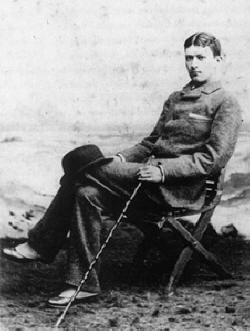 Ogden Codman Jr. (January 19, 1863 – January 8, 1951) was an
American architect and interior decorator in the
Beaux-Arts styles, and co-author with
Edith Wharton of
The Decoration of Houses (1897), which became a standard in American
interior design. Although he was happily married to a wealthy widow for a
brief time, there is clear evidence that Codman had sexual relations with men.
His correspondence survives, as does a photographic collection of mainly male
erotica, which was found hidden in the Codman House. Ogden Codman's brother,
Thomas Newbold Codman
was a musice critic and amateur photographer whose papers include a notable
collection of male erotica.
Ogden Codman Jr. (January 19, 1863 – January 8, 1951) was an
American architect and interior decorator in the
Beaux-Arts styles, and co-author with
Edith Wharton of
The Decoration of Houses (1897), which became a standard in American
interior design. Although he was happily married to a wealthy widow for a
brief time, there is clear evidence that Codman had sexual relations with men.
His correspondence survives, as does a photographic collection of mainly male
erotica, which was found hidden in the Codman House. Ogden Codman's brother,
Thomas Newbold Codman
was a musice critic and amateur photographer whose papers include a notable
collection of male erotica.
Codman was born on January 19, 1863 in
Boston, Massachusetts. He was the eldest of six children born to
Boston
native Ogden Codman Sr. (1839–1904) and the former Sarah Fletcher Bradlee.[1]
His paternal grandparents were Charles Russell Codman and Sarah Ogden.[1]
His paternal aunt, Frances Anne Codman, was married to noted architect and
builder
John Hubbard Sturgis,[1]
who designed his parents home,
Codman House in
Lincoln, Massachusetts, and the
Boston Museum of Fine Arts, along with
Charles Brigham.[2]
His maternal grandparents were James Bowdoin Bradlee and Mary May. His maternal aunt, Katherine May Bradlee, was married to
Benjamin W. Crowninshield and was the mother of
Bowdoin Bradlee Crowninshield, Codman's first cousin.
Codman spent much of his youth from 1875 to 1884 at
Dinard, an
American resort colony in
France, and
on returning to America in 1884, studied at the
Massachusetts Institute of Technology.[3]
He was influenced in his career by two uncles,
John Hubbard Sturgis, an architect, and Richard Ogden, a decorator. He
greatly admired Italian and French architecture of the sixteenth, seventeenth,
and eighteenth centuries, as well as English
Georgian architecture and the colonial architecture of Boston.[3]
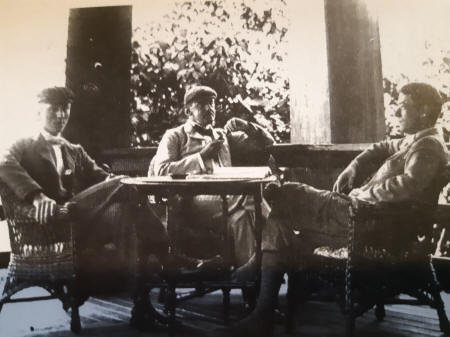
Daniel Berkely Updike (left) and Ogden Codman (right)

7 East 96th Street
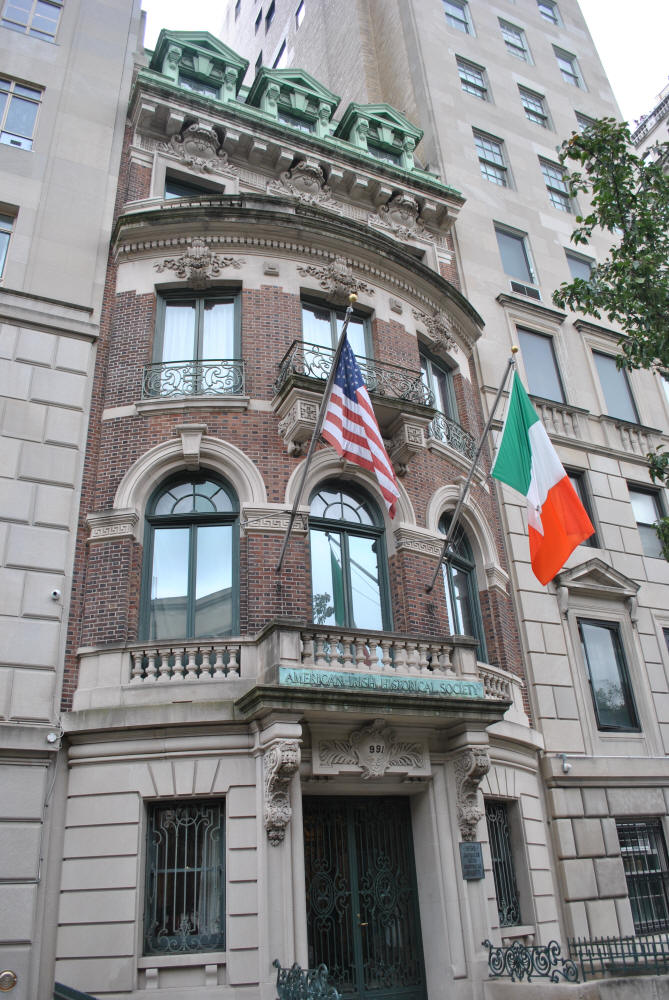
American Irish Historical Society
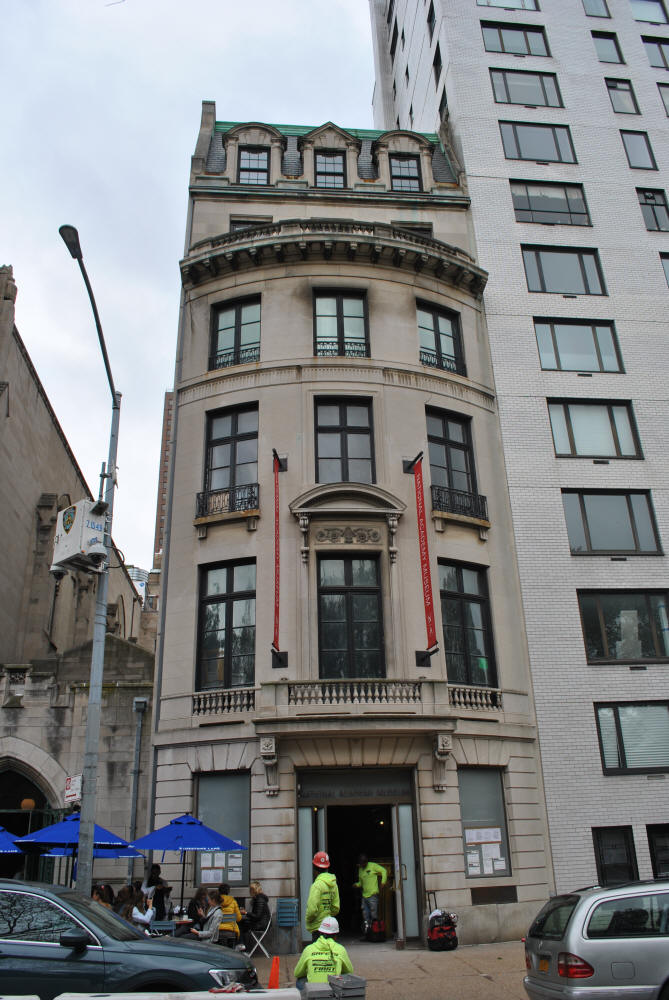
Archer M. Huntington House

Codman-Davis House, Washington, DC
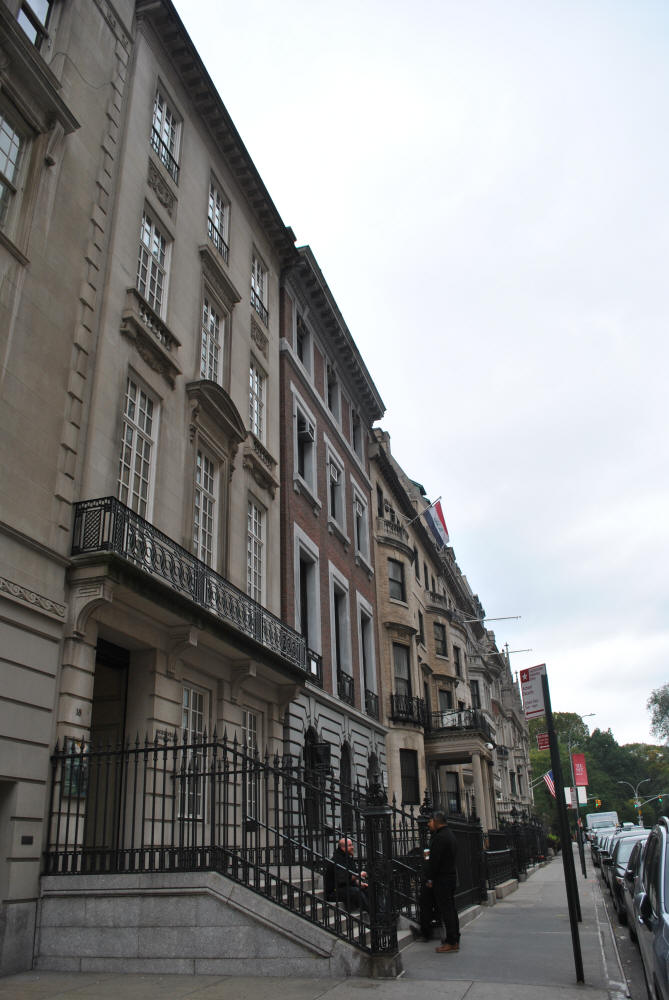
J. Woodward Haven House (now Acquavella Galleries)
.JPG)
Kykuit, Mount Pleasant, NY
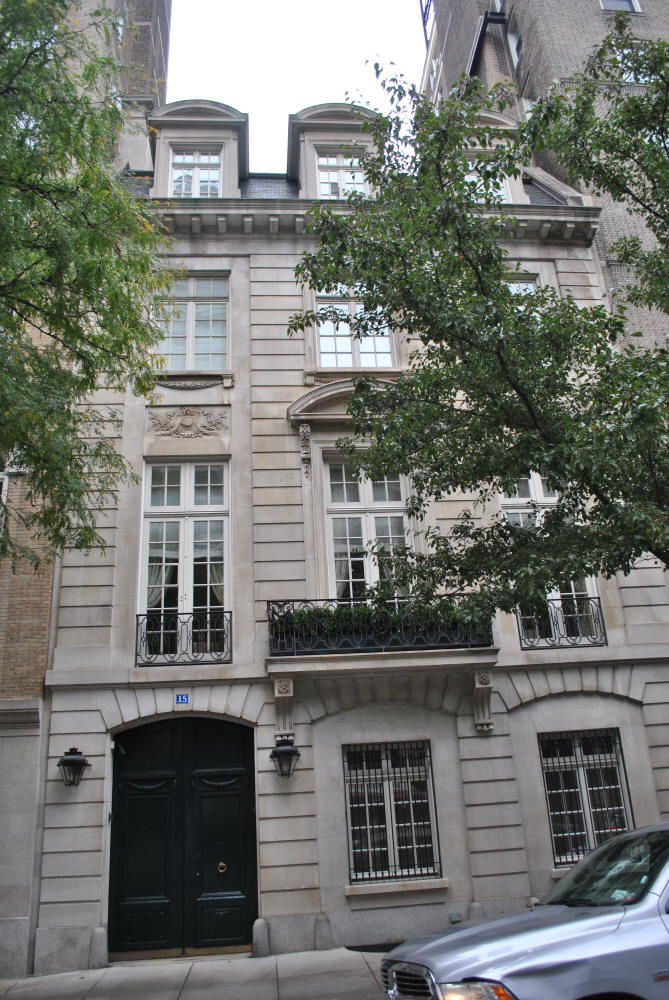
Lucy Drexel Dahlgren House

Metropolitan Museum of Art, NYC

Scuola d'Italia Guglielmo Marconi

The Breakers, Newport, RI
.jpg)
Vanderbilt Mansion, Hyde Park, NY
One of the most joyous portraits of the late XIX century LGBTQ life can be
found in the letters between Odgen Codman and
Arthur Little. Codman, like many
of his contemporaries, kept nearly every piece of paper he produced or
received, but perhaps uniquely, neither he nor his heirs destroyed even the
most incriminating materials. In all, 92 letters eventually entered the
archives of Historic New England due to the generosity of his longest
surviving sister, Dorothy. Most were written in the early 1890s, usually when
Codman or Little was traveling. The letters show no guilt regarding same-sex
feelings or relations and some are quite explicit. Codman was from a prominent
old Yankee family and his father mostly spent his time managing his
investments, as did Codman's siblings. Codman, however, was different in that
he pursued a career in interior design and today he is most known for the book
he co-authored with Edith Wharton,
The Decoration of Houses.
Daniel Berkeley Updike, with whim Codman may have had a relationship,
assisted by designing the book. Little was an architect who had studied at
MIT. His style was colonial revival and his best known work is the Larz
Anderson mansion in Washington, DC. Both Little and Codman eventually married,
Codman to a wealthy widow in a marriage that lasted five years until her
death. Afterwards, Codman kept himself occupied with a string of young male
live-in secretaries. Little and Codman often referred to men by women's names
or put their male names in quotation marks or underlined them. The executor of
Wharton's estate, Gaillard Lapsley,
for example, was referred to as Aunt Mary. Little wrote that he liked
effeminate young men. In addition to a Boston house that was a showcase of
contemporary interior design, he had a summer house in Swampscott where he
held all make dances. Older than Codman, Little lived a quieter life, though
both shared a love of post cards that featured nude men, which Little
purchased during trips to Italy. In 1902, a friend of theirs named George
Griswald was mentally undone by a scandal with reports that Griswald was in a
state of near collapse, hands shaking, teeth chattering, insomnia, panic,
because of gossip and innuendo. He may have been blackmailed, or perhaps some
other exposure was feared.
After brief apprenticeships with Boston architectural firms, Codman started
his own practice in Boston, where he kept offices from 1891 to 1893, after
which time he relocated his main practice from Boston to
New York City.[4]
Codman also opened offices in
Newport, Rhode Island as early as 1891, and it was in Newport that he
first met novelist
Edith Wharton. She became one of his first Newport clients for her home
there, Land's End. In her autobiography, A Backward Glance, Wharton
wrote:[5]
We asked him to alter and decorate the house—a somewhat new departure,
since the architects of that day looked down on house-decoration as a
branch of dress-making, and left the field up to the upholsterers, who
crammed every room with curtains, lambrequins, jardinières of artificial
plants, wobbly velvet-covered tables littered with silver gew-gaws, and
festoons of lace on mantelpieces and dressing tables.[5]
Codman viewed interior design as "a branch of architecture".[6]
Wharton subsequently introduced Codman to
Cornelius Vanderbilt II, who hired Codman in 1894 to design the second and
third floor rooms of his Newport summer home,
The
Breakers, which he did in a clean eighteenth-century French and Italian
classical style. Codman was not a draftsman, and it is said that in Paris he
hired a talented group of students from the
École des Beaux-Arts to draw up the sketches for Vanderbilt.
In 1907, Codman built what was later to be known at the
Codman–Davis House in
Washington, D.C. for his cousin
Martha Codman Karolik. It is currently the official residence of the
Ambassador of
Thailand,
and one of the few intact homes that he designed. This included a
carriage house which now houses the Apex Night Club.
Codman's New York clients included
John D. Rockefeller Jr., for whom he designed the interiors of the
Rockefeller family mansion of
Kykuit in
1913, and
Frederick William Vanderbilt, for whom he designed the interiors for his
mansion in
Hyde Park, New York, and his house on
Fifth Avenue. He also collaborated with Wharton on the redesign of her
townhouse
at 882–884
Park
Avenue as well as on the design of
The Mount, her house in Lenox, Massachusetts. His suave and idiomatic
suite of Régence and Georgian parade rooms for entertaining are preserved in
the townhouse at 991
Fifth Avenue, now occupied by the
American Irish Historical Society. His French townhouse in the manner of
Gabriel at
18 East 79th Street, for J. Woodward Haven (1908–09) is now occupied by
Acquavella Galleries.[7]
All told, Codman designed 22 houses to completion, as well as the East Wing
of the
Metropolitan Club in New York. He also began the trend of lowering the
townhouse entrance door from elevated stairways to the basement level. He
designed a series of three houses in
Louis XIV style at 7 (his own residence), 12, and 15 East 96th Street from
1912 to 1916. The
New York City Landmarks Preservation Commission later described the facade
of number 7 as being "full of gaiety and frivolous vitality" and further, "on
approaching the house, Paris and the
Champs-Élysées immediately come to mind."
In 1920, Codman left New York to return to France, where he spent the last
thirty-one years of his life at the
Château de Grégy, wintering at
Villa Leopolda in
Villefranche-sur-Mer, which he created by assembling a number of
vernacular structures and their sites: it is his masterpiece, the fullest
surviving expression of his esthetic.
Codman was homosexual and pursued attractive young men throughout his life,[8][9]
but on October 8, 1904 he married
Leila Griswold Webb (1856-1910),[10]
who was six years older than him and was the widow of railroad magnate
H. Walter Webb and the mother of
New York State Senator
J. Griswold Webb.[11]
Leila was the sister-in-law of Dr.
William Seward Webb, who was married to the former
Eliza Vanderbilt, and
Alexander S. Webb, the longstanding
President of City College of New York. His wife died in 1910,[12]
leaving him a fortune.[13]
After her death, he sold their house on
15 East 51st Street (which he had designed for Leila while she was still
married to her first husband) and built himself another home at
7 East 96th Street in 1912.[3]
In 1918, Codman leased the former
Newport cottage of society leader
James Vanderburgh Parker, known as "Sans Souci" and located on Merton
Road, for the summer.[14]
Codman died at age 87 in 1951 at the
Château de Grégy in
Évry-Grégy-sur-Yerre,
France.[15]
His architectural drawings and papers are collected at the
Avery Architectural and Fine Arts Library at
Columbia University; the Codman Family papers are also held by
Historic New England and the
Boston Athenaeum.[3]
My published books:


BACK TO HOME PAGE

- https://en.wikipedia.org/wiki/Ogden_Codman_Jr.
- Ferentinos, Susan,. Interpreting LGBT History at Museums and Historic
Sites (Interpreting History) . Rowman & Littlefield Publishers.
Edizione del Kindle.
- Improper Bostonians Lesbian and Gay History from the Puritans to
Playland By History Project Staff · 1998
- The Hub of the Gay Universe, An LGBTQ History of Boston, Provincetown,
and Beyond, by Russ Lopez, 2019
 Ogden Codman Jr. (January 19, 1863 – January 8, 1951) was an
American architect and interior decorator in the
Beaux-Arts styles, and co-author with
Edith Wharton of
The Decoration of Houses (1897), which became a standard in American
interior design. Although he was happily married to a wealthy widow for a
brief time, there is clear evidence that Codman had sexual relations with men.
His correspondence survives, as does a photographic collection of mainly male
erotica, which was found hidden in the Codman House. Ogden Codman's brother,
Thomas Newbold Codman
was a musice critic and amateur photographer whose papers include a notable
collection of male erotica.
Ogden Codman Jr. (January 19, 1863 – January 8, 1951) was an
American architect and interior decorator in the
Beaux-Arts styles, and co-author with
Edith Wharton of
The Decoration of Houses (1897), which became a standard in American
interior design. Although he was happily married to a wealthy widow for a
brief time, there is clear evidence that Codman had sexual relations with men.
His correspondence survives, as does a photographic collection of mainly male
erotica, which was found hidden in the Codman House. Ogden Codman's brother,
Thomas Newbold Codman
was a musice critic and amateur photographer whose papers include a notable
collection of male erotica.





.JPG)




.jpg)

